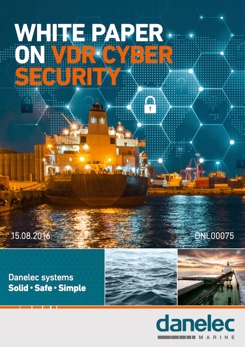World’s first UKHO approved app
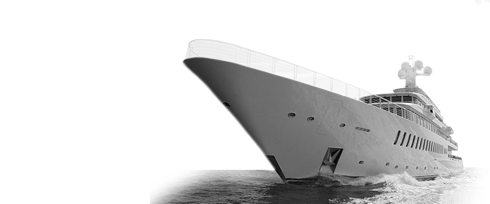
As part of a continuing mission to enhance navigation standards in the maritime industry, on 1 September the navigation management company Da Gama Maritime (DGM), will launch their new ‘Vasco App’, it is learnt. Having been accepted by the United Kingdom Hydrographic Office (UKHO) as meeting the rigorous standards to provide official paper chart corrections, this is the first means, it is understood, by which the information is provided to the mariner by way of an electronic tablet device.
White paper on VDR cyber security
The shipping industry is increasingly embracing Big Data and the Internet of Things (IoT) in a move to transform and streamline many aspects of ship operations. This can mean connecting through secure Internet links computers and sensors on ships at sea with shoreside IT networks.
The Denmark-based company Danelec pointed out in mid-August that while these technical innovations can bring big benefits in terms of greater visibility into the performance of assets and improved efficiency, they also can create new risks in terms of vulnerability to cyber attacks on the shipboard and shoreside IT infrastructure.
Danelec’s white paper here.
Congratulations
We send hearty congratulations to the following members of the worldwide navigation community who are advancing in their careers:
– Professor Captain Miroslaw Jurdzinski FNI, on being awarded the Polish Navigation Forum Annual Award in recognition of extraordinary contributions to the development of navigation.
– Simon Gaskin, FRIN, FNI, Secretary General of IAIN for his induction as a Freeman of the Honourable Company of Master Mariners, London.
The rapid sight reduction app
In an age where there is an app for just about everything, the United Kingdom Hydrographic Office (UKHO) and HM Nautical Almanac Office (HMNAO) have been developing a sight reduction app. This is aimed at providing a fully digitized version of the AP3270/NP303 publication and will plot the user’s position lines to give a visual representation of an astro fix.
The app is in development, and this is where UKHO needs the help of navigators. Dr Paresh Prema, UKHO’s Senior Analyst/Web Developer needs volunteer navigators with android-based hand-held devices and skills in astro navigation to test-drive, to comment on and to develop further this exciting piece of navigationally-useful technology.
If you feel you can help, please contact: Dr Paresh Prema at the UKHO for details.
US changes to GNSS
It is understood from Inside GNSS that the GPS Directorate is requesting public comment on proposed changes to several interface specification (IS) and Interface Control documents (ICDs) for GPS signals in space.
Developments have prompted the changes, including work on the Next-Generation Operational Control Segment (OCX), design of the GPS Block III satellites, and a new memorandum of agreement among several federal agencies that would introduce new satellite outage file (SOF) to Notice Advisory to Navstar Users (NANU) messages.
Electronic jamming
It was announced from New Mexico on 27 July that the (US Department of Homeland Security (DHS) Science and Technology Directorate (S&T) is working to combat electronic jamming of first responders’ radio communications systems by enhancing jamming prevention, detection and mitigation technologies.
A DHS S&T First Responder Electronic Jamming Exercise took place on 16 July at the White Sand Missile Range in New Mexico, where DHS S&T hosted first responders from more than 40 federal, state and local agencies, including the Federal Emergency Management Agency, US Customs and Border Protection, and US Immigration and Customs Enforcement.
Oceanographer of the US Navy signs MoA with Republic of Korea Navy

It was announced on 25 July from Busan, Republic of Korea, by the US Navy that the Oceanographer of the Navy and Commander, Naval Meteorology and Oceanography Command Rear-Admiral Tim Gallaudet had signed an amendment extending a Memorandum of Agreement (MOA) with the Republic of Korea Navy (ROKN) following a meeting with ROKN Chief of Naval Operations Admiral Jung, Ho-sub.
It is understood this agreement allows for the US Navy to continue cooperating with the ROKN in conducting military surveys, processing and analyzing collected oceanographic, hydrographic and geo-acoustic data, preparing gridded digital databases and exchanging data and information.
Swedish marine insurer puts root cause of incidents into focus
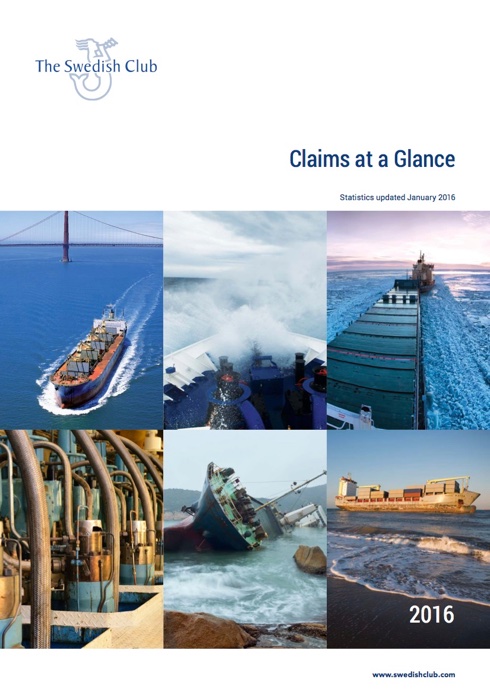
The Swedish Club has launched its latest publication, Claims at a Glance, which provides an insight into the full range of claims the Club has handled over the last five years, and is intended as a tool to reduce the frequency of incidents for both P&I* and H&M** claims. With prevention at its heart, it covers the key lessons learned across a range of real life situations, and provides a useful update of data contained in its most recent loss prevention titles: P&I Claims Analysis; Main Engine Damage; Navigational Claims; Ice – Advice for
Trading in the Polar Regions; Heavy Weather; and Wet Damage to Cargo.
Claims at a Glance investigates the causes of a wide range of incidents and makes practical recommendations on how to prevent them. It makes full use of Interactive Root Cause Analysis (IRCA) to analyse the root cause of a variety of claims, demonstrating that despite the seeming differences between incidents, the root causes are often very similar.
The report can be found here.
US-Iraq-Kuwait trilateral exercises
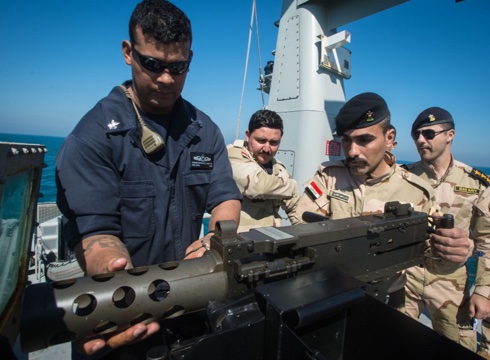
The US Navy, Army and Coast Guard together with Iraqi and Kuwaiti navies and Kuwait Coast Guard, solidified the creation of the first in a series of US-Iraq-
Kuwait trilateral exercises following an initial planning conference held at Naval Support Activity Bahrain. This was announced from Manama, Bahrain, on 13 July. This US-Iraq-Kuwait trilateral will be a quarterly exercise that serves to develop the proficiency of all participating forces to work together in support of regional safety and security.
CHIRP
CHIRP is the UK Confidential Reporting Programme for Aviation and Maritime. The aim of CHIRP is to contribute to the enhancement of aviation safety in the UK and maritime safety worldwide, by providing a totally independent confidential (not anonymous) reporting system for all individuals employed in or associated with these industries (see its site.
The GA FEEDBACK has now been issued (No:68; 2/2016) and is attached as a
pdf.
Spirent launches GSS7000 satellite navigation test system

News has been received from the UK branch of global navigation satellite system (GNSS) testing provider, Spirent Communications plc., of the launch of the GSS7000 series of multi-frequency, multi-GNSS RF constellation simulators. The GSS7000 (illustrated) provides an entry to multi-frequency testing, with a modular approach to enable this new precision GNSS simulation system to expand with users’ needs.
It is understood the GSS7000 simulation system will suit receiver, system and application developers who want to take advantage of new satellite navigation systems and the better accuracy offered by civilian, multi-frequency GNSS.
CSMART, the most advanced maritime simulation and training centre
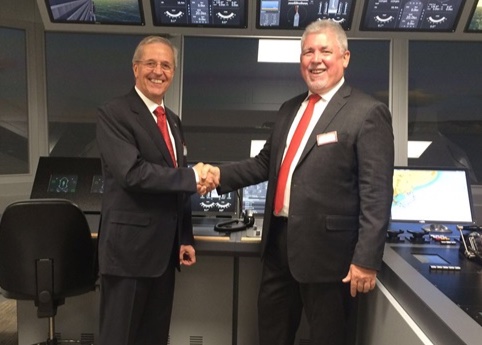
It has been announced that the Carnival Corporation Center for Simulator and Maritime Training (CSMART) in Almere, The Netherlands, was commissioned on 14 July. The CSMART is said to be the largest facility in terms of training capacity and utilises the most innovative technology provided by Transas.
The Transas Integrated Full Mission Simulation Academy equipment implemented at the CSMART is a significant innovation that moves the capability of the most complex challenge to maritime safety, it is understood. This is the
result of almost two years’ intensive R&D investment. Carnival recognised that a step-change was required in the way seafarers are trained to improve safety at sea. The interaction of human factors on board cruise vessels are some of the most complex in the maritime industry.
The driverless car; driver consultation

On 11 July the (UK) Department for Transport invited car drivers to have their
say on the use of advanced driver assistance systems and self-driving technologies in cars on British roads.
At the same time the following were announced:
– A programme of reform to make the roads ready for advanced driver assistance and driverless technology was launched.
– A consultation with a chance for everyone to have their say about new vehicle technologies was offered.
In summary, a major consultation to help pave the way for automated cars to be used on British roads was launched, with all drivers invited to have their say. Under the proposed measures, rules will be changed so automated vehicles can be insured for use on the roads.
Birmingham Airport to operate new generation surface movement radar from Terma
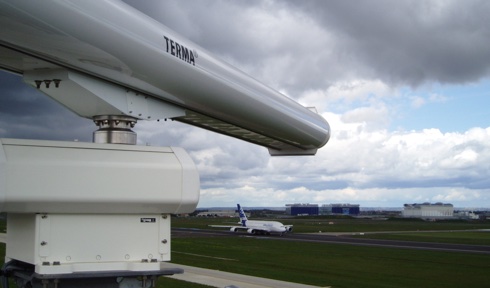
On 11 June it was announced by Terma in Aarhus, Denmark that the company has been contracted to upgrade the existing Terma Surface Movement Radar (SMR) at Birmingham Airport. With this Birmingham will join a long list of airports to operate the new generation Solid State SCANTER 5502 Surface Movement Radar.
Nine new maritime patrol aircraft for RAF
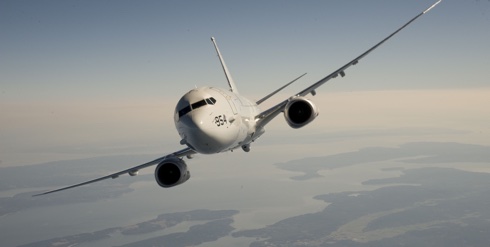
From London on 11 July the Ministry of Defence (MOD) confirmed the deal to purchase nine P-8A Poseidon Maritime Patrol Aircraft (MPA) for the Royal Air Force (RAF). These new aircraft, which will be based at RAF Lossiemouth in Scotland, will play a vital role in protecting the UK’s nuclear deterrent and the UK’s two new aircraft carriers. They will also be able to locate and track hostile submarines, and will enhance the UK’s maritime Search and Rescue (SAR) capability. This capability will also bring economic benefits to Scotland and the wider UK, with an additional 400 personnel based at RAF Lossiemouth.
ABS Group and DroneView to inspect wind turbines
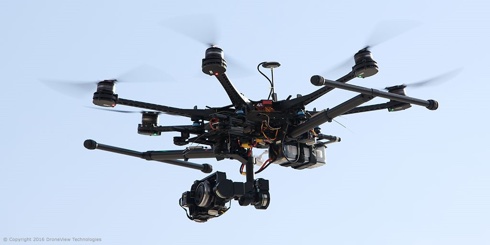
It was announced from Houston, Texas, on 6 July that ABS Group, a leading provider of technical inspection and verification services to the global power and wind energy industries, had signed an agreement with DroneView Technologies to deliver joint aerial wind turbine and equipment inspections utilizing sophisticated drone technology as a cost-effective means. As advanced technology drones provide a data-driven alternative to traditional inspections of aerial wind turbine blades at hazardous heights. This will lead to safer, more efficient wind farm operations, it is understood.
F-35B Lightning II visits new homes for the first time
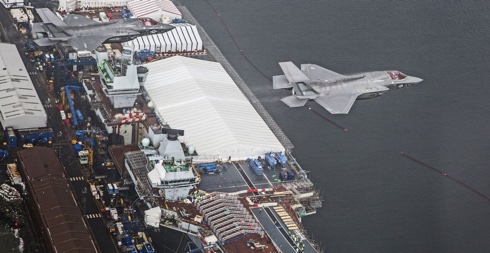
Friday 1st July 2016 was an historic day for the UK as elements of the future Royal Navy and Royal Air Force combat air fleets, the F-35B Lightning II, flew over their prospective ‘homes’; HMS Queen Elizabeth, HMS Prince of Wales in Rosyth and RAF Marham in Norfolk.
The head of the Fleet Air Arm, Rear-Admiral Keith Blount commented: ‘Today marks a significant milestone in the nation’s return to aircraft carrier aviation and carrier strike. Both ships have been designed from the keel up to operate with the F-35B and the Royal Air Force and Royal Navy are working ever closer to see fixed-wing aircraft once more operating from Royal Navy Aircraft Carriers. I feel very proud to be part of it.’
The new aircraft carriers will each be capable of operating up to 36 F-35B Lightning II stealth jets.
F-35B Lightning stealth jet made its UK debut
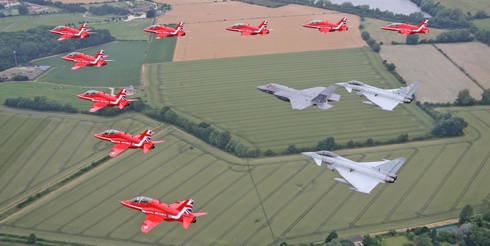
The special formation took place at the Royal International Air Tattoo, Gloucestershire, and marked the arrival into the UK of the F-35B. The world’s first vertical landing supersonic stealth strike fighter jet, the F-35B Lightning II comes into service with the Royal Navy and the Royal Air Force from 2018. That year will see celebrations commemorating the formation of the Royal Air Force in 1918 when the Royal Naval Air Service and the Royal Flying Corps were merged as one service. – photo: UK Crown Copyright 2016
On 8 July Their Royal Highnesses the Duke and Duchess of Cambridge and Prince George met Royal Air Force Red Arrows pilots and Air Cadets at the world’s biggest airshow. Their Royal Highnesses attended the Royal International Air Tattoo (RIAT), at RAF Fairford in Gloucestershire, as Britain’s new supersonic F-35B Lightning stealth jet made its UK debut with a thrilling flying display.
Airstart developing leading edge technologies for UAS
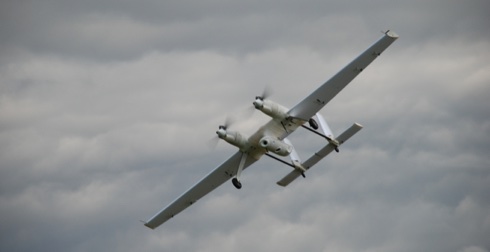
The AIRSTART Consortium will be showcasing leading edge technologies essential for operating Beyond Visual Line of Sight, BVLOS, at Farnborough International Airshow trade event from 11-15 July. UAS is a disruptive technology which could have significant impact in applications such as search and rescue and electricity distribution network inspection, but this will only be fully realised if UAS can safely operate over longer distances, it is reported.
Royal Aeronautical Society comments on UK’s EU referendum result
Commenting on the outcome of the result of the EU referendum held in the UK on 23 June 2016, Professor Chris Atkin, President of the Royal Aeronautical Society, said: ‘Recognising the concerns of many in our community about the effects of the
changed UK/EU relationship, the Royal Aeronautical Society would encourage all parties to work to preserve the excellent collaboration that exists between the United Kingdom and the rest of Europe in the aerospace and aviation industry. The Society stands ready to advise those making choices over the coming months that will have an impact on this important economic sector.’
South African small vessel tracking trial
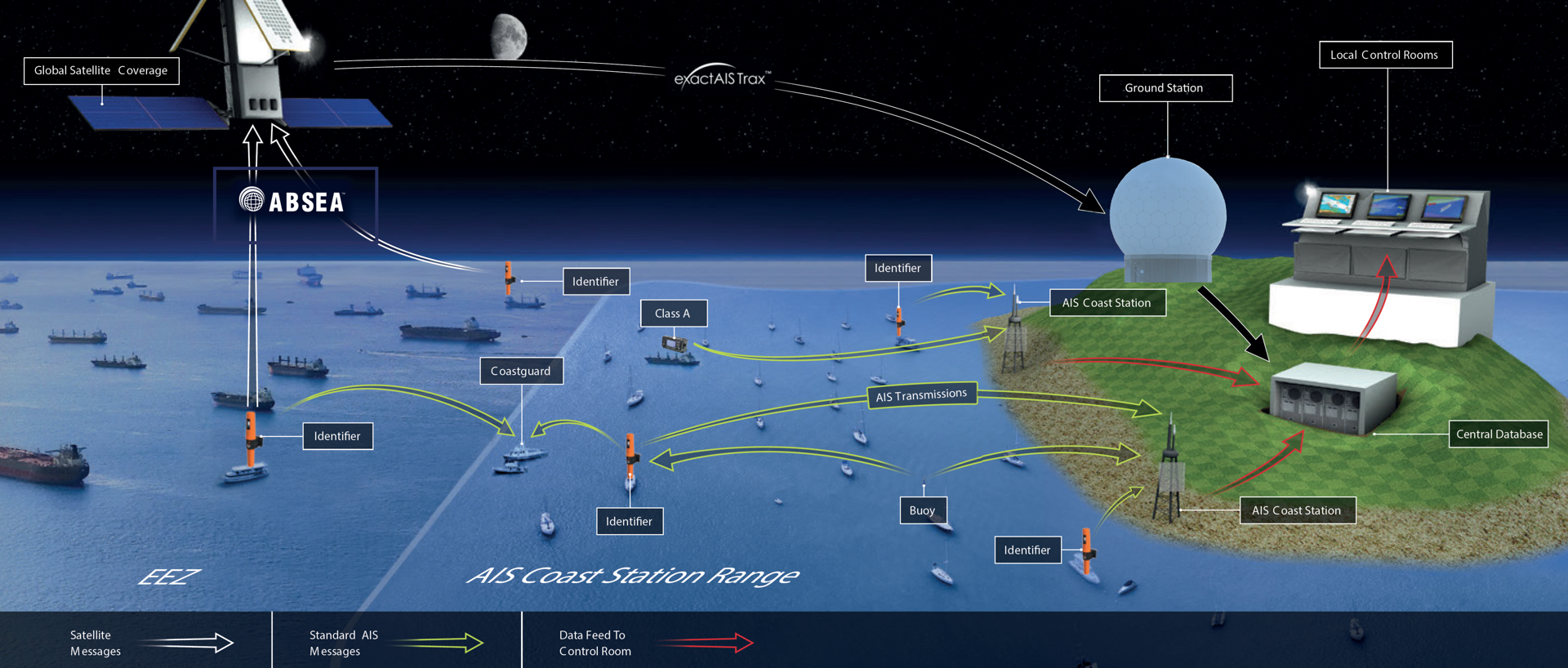
It was announced on 21 June that exactEarth Europe Limited, a UK subsidiary of exactEarth Ltd, a leading provider of Satellite AIS data services, recently successfully concluded the main part of its South Africa Safety Initiative for Small Vessels (OASIS) project – a small vessel tracking trial with the South African Maritime Safety Authority (SAMSA), part-funded by the UK Space Agency (UKSA) under its International Partnership Space Programme (IPSP).
A key aspect of SAMSA’s mandate is to ensure safety of life at sea, including small vessels in the fisheries, leisure marine and workboat sectors. These vessels, particularly artisanal fishing boats, typically operate without a tracking system onboard, making it difficult for the authorities to locate them if they are involved in an accident at sea. With IPSP funding, exactEarth Europe and its IPSP partners SRT Marine Technology (SRT – UK) and Marine Data Solutions (MDSol – South Africa), were able to carry out extensive sea trials in South Africa of their cost effective Advanced Class B Satellite Enabled AIS (ABSEA) Identifier – designed specifically to support long and short range small vessel tracking.
US Mobile User Objective System Satellite launch
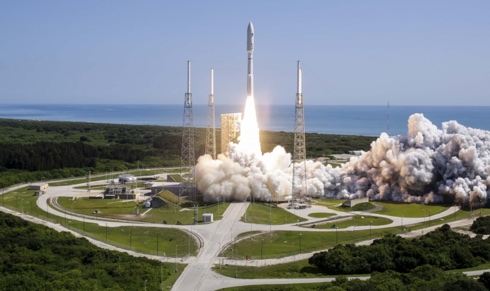
The US Navy’s fifth Mobile User Objective System (MUOS) satellite was launched on 24 June from Cape Canaveral Air Force Station, Florida. MUOS-5 is an on-orbit spare and the final satellite in the five-satellite MUOS constellation. Later the same day it was reported that the satellite was successfully responding to commands from a Navy and Lockheed Martin team operating MUOS-5 from the Naval Satellite Operations Center, Naval Base Ventura County, Point Mugu, California.
MUOS is an Internet Protocol-based system designed to provide improved
communications capabilities to users around the world, regardless of where they
are in relation to a satellite, and will provide, it is reported, greater than ten times the bandwidth capacity compared with the current UHF constellation.
International Day of the Seafarer
A message from Frank Coles, CEO of Transas
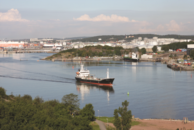
‘Seafarers truly are the beating heart of the shipping industry. On this International Day of the Seafarer, I would like to take the opportunity to applaud and give recognition to the great contribution of seafarers to the global economy and society.’

‘The work that seafarers carry out shifts 90% of world goods around the globe day in-day out, year-upon-year. They keep the world in motion and are truly indispensable. However, it is a role that is often invisible or taken for granted. The important role that seafarers play in enabling the economy must be recognised. Seafarers are truly “At Sea For All”.’
IHMA celebrates its first 20 years
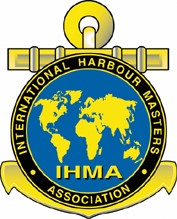
IHMA, the International Harbour Masters’ Association, celebrated its 20th anniversary at its congress in Vancouver where more than 100 delegates gathered from 30 May to 2 June 2016 to consider the theme of port expansion. This meeting was supported by an extensive industry exhibition.
Keynote presentations at the congress included the expanding role of VTS and the impact of e-Navigation from the Secretary-General of IALA-AISM, Mr Francis Zachariae, with the e-navigation theme also reflected by Captain Simon Pelletier, President of the International Maritime Pilots’ Association, who spoke about megaships and advanced pilot technology.
The origins of the International Harbour Masters’ Association can be traced back to the 1950s when harbour masters of the major ports of north west Europe began to meet regularly. Despite working in ports of diverse scale and operation, there was a strong thread of common purpose and a view that their shared interests could be developed for the benefit of all. The European Harbour Masters’ Association (EHMA) was established in 1985.
Agreement to work towards an international association led to the inauguration of the IHMA on 21 June 2006 with Captain H-J Roos, harbour master of the port of Bremen, elected as first President of IHMA.
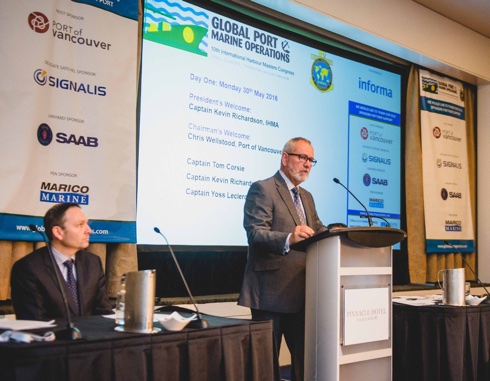
New president for the Nautical Institute
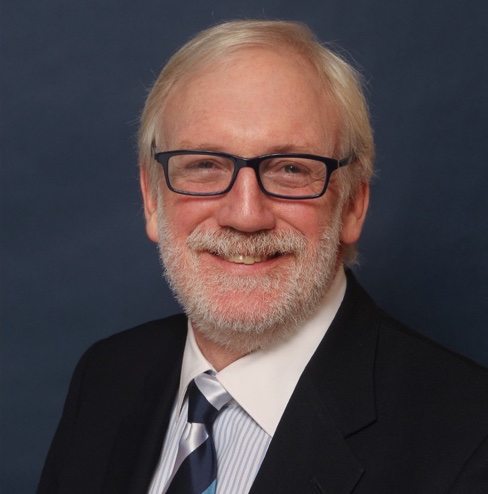
The newly elected President of The Nautical Institute, Captain David (Duke) Snider (pictured), has pledged to ensure the mariner’s voice is heard loud and clear within the maritime industry. Speaking at the Institute’s annual general meeting in Aberdeen, Scotland, on 9 June, Captain Snider said that one of his first roles as President will be to champion the new five-year Strategic Plan, which was launched in March. The plan, informed by responses from more than 1,400 members surveyed in a questionnaire, will see a renewed focus on human element projects aimed at building competencies for modern integrated ships.
Command, manning and fatigue, mentorship and continuing professional development (CPD) were other themes identified for further development.

